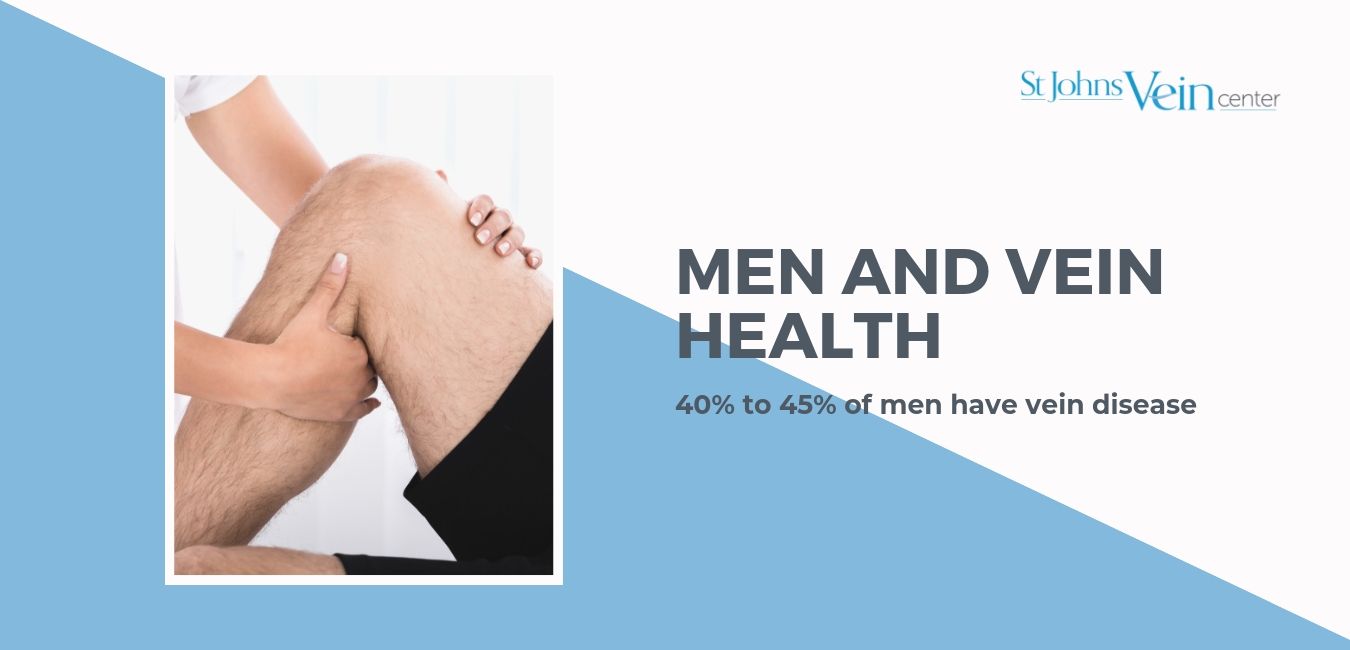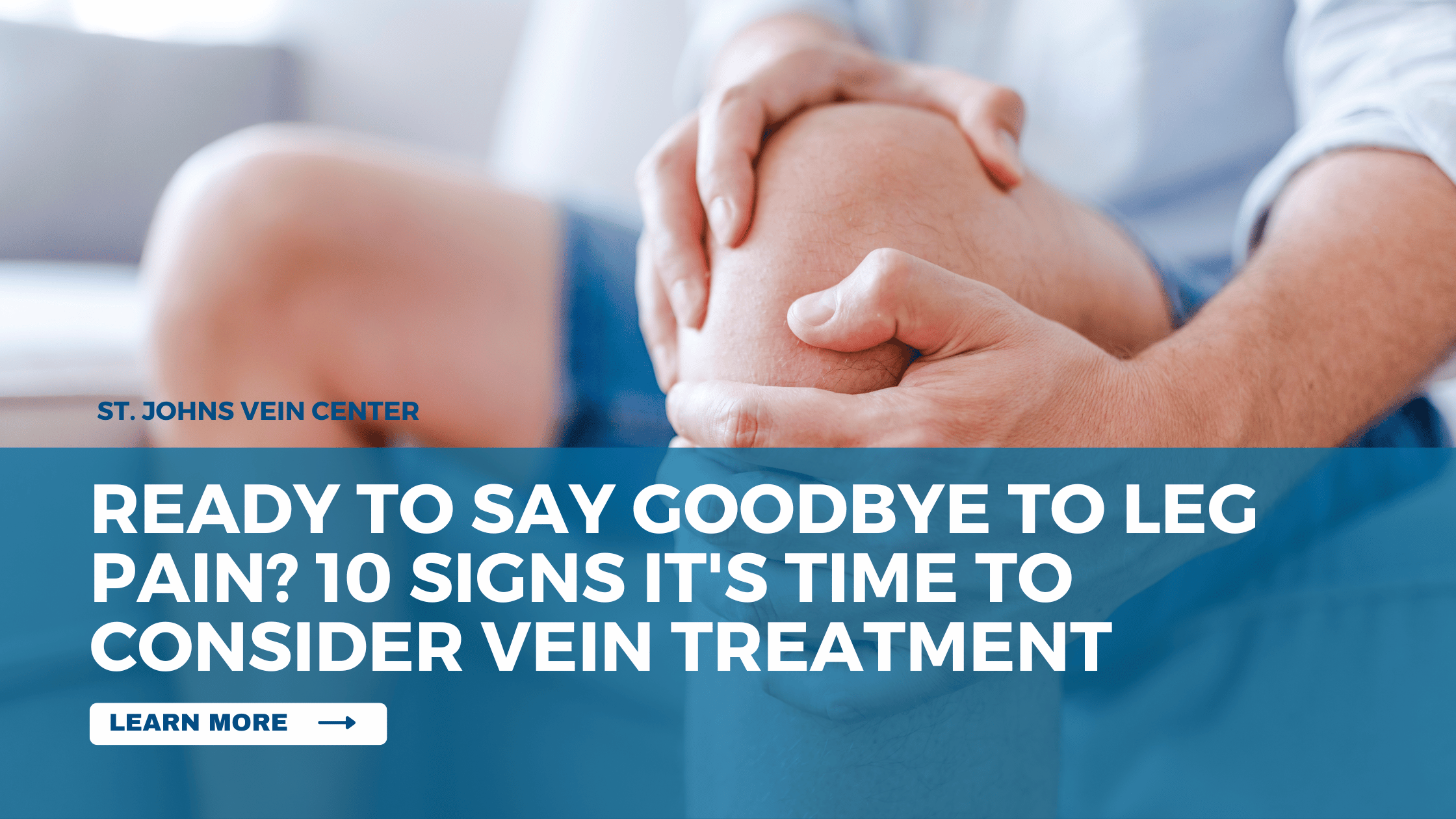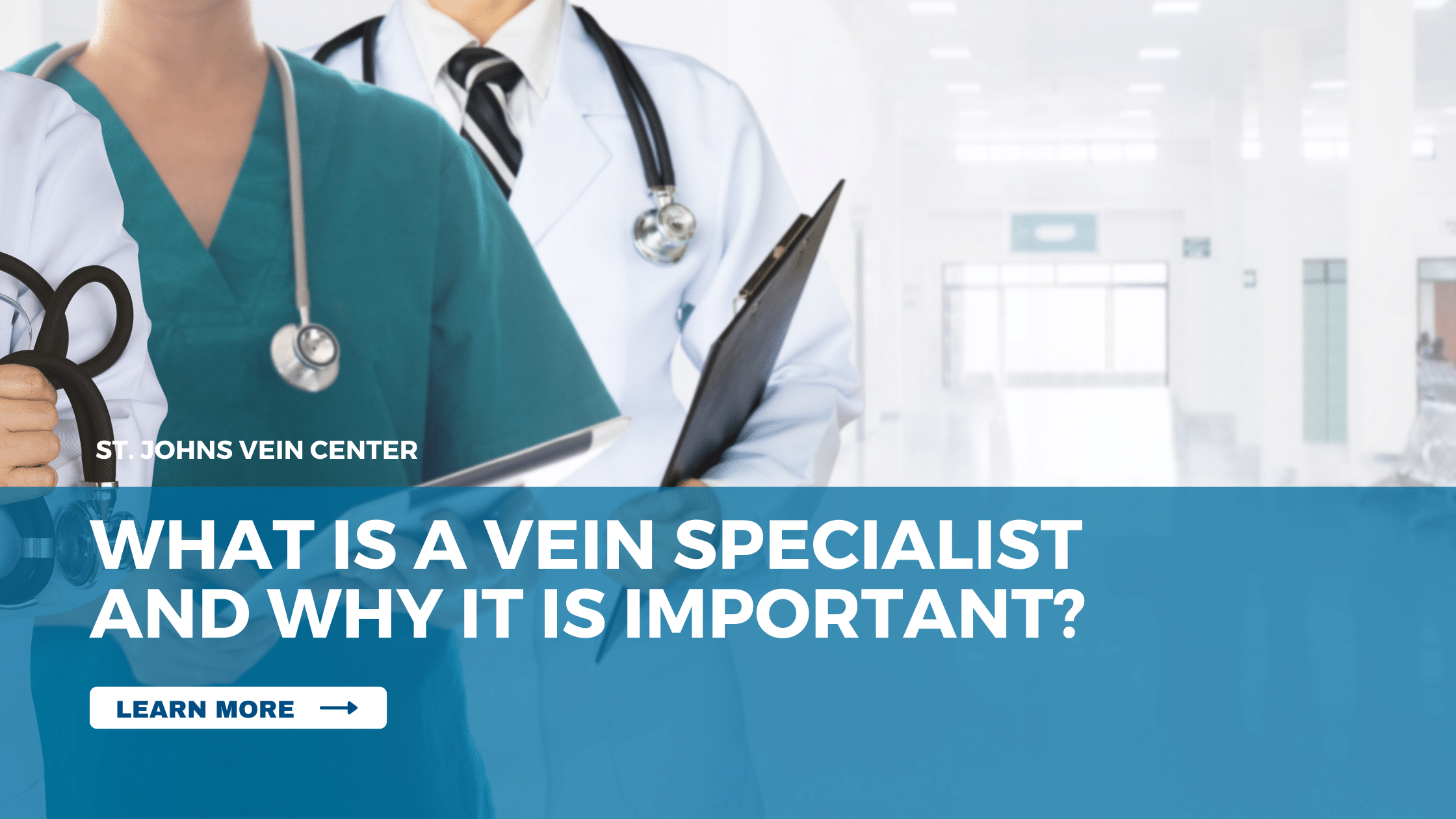Varicose veins have long been perceived as a health issue predominantly affecting women, especially older women. However, recent research reveals that 40% to 45% of men suffer from vein disease, with 10% to 15% experiencing visible varicose veins. Unfortunately, men are often less inclined to address the early signs of venous disease, making them more vulnerable to its effects.
At St. Johns Vein Center, we genuinely care about our community, and we want you and the men in your life to be well-informed about the different types of venous diseases and understand how to maintain men’s leg vein health.
Types of Venous Disease that Impact Men
- Spider Veins: These are clusters of dilated blood vessels within the skin, typically smaller than 1 millimeter in diameter, also known as telangiectasias.
- Varicose Veins: These abnormal veins develop when the valves within the veins weaken or sustain damage, causing blood to pool and veins to bulge.
- Chronic Vein Insufficiency (CVI): This medical condition occurs when veins struggle to pump sufficient oxygen-poor blood back to the heart.
- Deep Vein Thrombosis (DVT): DVT refers to the formation of blood clots within deep veins, often occurring in the legs.
- Pulmonary Embolism (PE): The most severe form of venous disease, PE arises when a blood clot dislodges from deep within the body and travels to the lungs.
Keeping Men’s Legs Healthy
To maintain healthy legs and combat venous disease, consider the following tips:
- Avoid prolonged periods of standing or sitting: If your profession requires extended periods on your feet, make sure to incorporate leg-friendly practices both at work and at home.
- Quit smoking: Smoking negatively impacts leg health, so quitting smoking is crucial. Learn about the detrimental effects smoking can have on your legs.
- Exercise regularly: Engaging in regular physical activity is vital for leg health. Even a brisk 15- to 20-minute walk each day can make a significant difference.
- Embrace a healthy diet: Good nutrition isn’t only essential for a healthy heart but also for maintaining healthy veins, including those in your legs.
- Consider compression socks: Compression socks, suitable for both men and women, are specialized hosiery designed to prevent venous disorders and deter their progression.
At St. Johns Vein Center, we specialize in addressing various vein conditions in men. By seeking professional care, you can receive personalized treatments tailored to your needs. Don’t let the stigma surrounding varicose veins hold you back from seeking help. Prioritize men’s leg vein health and take control of your well-being.
Remember, healthy legs contribute to a healthier you.




